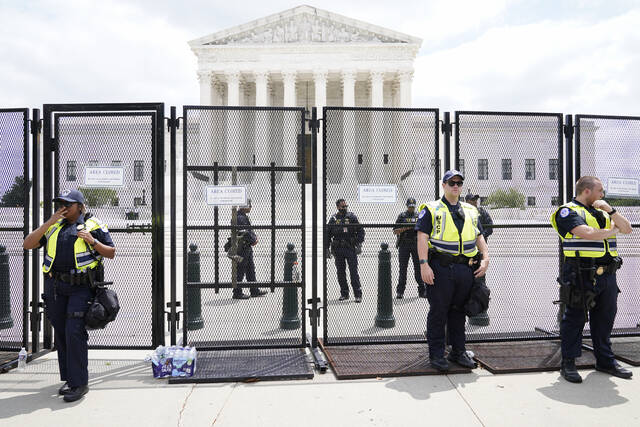Editorial: Does the Supreme Court believe in states' rights or not?
The United States Supreme Court certainly gave people something to think about last week.
On Thursday, the court delivered a decision on a gun law in the state of New York that required people to demonstrate a need for a weapon in order to receive a concealed carry permit. It was a 6-3 split of the justices along predictably political lines. Justice Clarence Thomas wrote the majority opinion, underscoring the Second Amendment’s right to bear arms as ensuring an “individual’s right to carry a handgun for self-defense.”
“We know of no other constitutional right that an individual may exercise only after demonstrating to government officers some special need,” Thomas wrote.
The decision collapsed New York’s gun law and opens the door to challenges of similar laws in states such as California and Maryland, blue states where gun control has been seen as an important issue.
Then came Friday and the long-anticipated ruling on Dobbs v. Jackson Women’s Health Organization, a Mississippi case testing abortion law. The test succeeded and the law failed as Justice Samuel Alito’s final draft of an earlier leaked decision overruled not only the 49-year-old precedent of Roe v. Wade but the Pennsylvania-initiated decision in Casey v. Planned Parenthood.
With the publication of another 6-3 split decision, abortion became a states’ rights issue.
The rulings all but contradicted each other on an issue that once ripped the country in half. In less than 24 hours, the Supreme Court said states have no rights to make decisions about guns but all the rights to make decisions about abortion.
These are much more complicated legal issues than the sticky syrup they are boiled down to create. The gun control laws have to contend with the fact that guns are specifically spelled out in the Bill of Rights. Not only is abortion not mentioned in the Constitution, neither are women, putting the issue on very different footing.
But it doesn’t change the fact that both rulings have prompted a very political response. A laundry list of states have trigger laws on the books, poised to go into effect the moment Roe v. Wade was threatened. Abortion was illegal in West Virginia in 1973. With the ruling, it becomes illegal again, making a procedure that was legal on Thursday a felony today.
In Pennsylvania, it sets up what already was a fraught gubernatorial race between Democratic Attorney General Josh Shapiro and Republican state Sen. Doug Mastriano to become one of the most watched and potentially consequential races in the nation come November.
Generally, Supreme Court rulings take confusing situations and iron out the problems with clear decisions. This is right; that is wrong. This is legal; that is not. They can take politics and strip it down to the framework of the law.
These rulings before the court’s session ends for the summer have done the opposite, leaving signs pointing in two different directions when it comes to whether or not state lawmakers have the right to make decisions.
Remove the ads from your TribLIVE reading experience but still support the journalists who create the content with TribLIVE Ad-Free.

